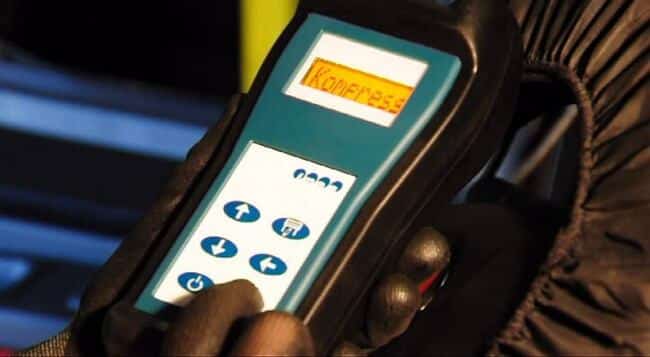8 Ways to Monitor and Measure Marine Engine Performance
Marine engine on ships are used for 2 main purposes – for propelling the ship and for generating electricity, which assists in powering the ship’s propulsion plant.
The efficiency of any machinery on board ship is directly related to its performance. In order to get the best out of marine engines, it is very important to monitor their performances and take measures to achieve an efficient combustion.
Ensuring this will not only reduce generation of pollution from engines but also the overall operating cost of the ship.

Jürgen Burg/YouTube
Following are ways to monitor and measure the performance of the engine:
1. Measure the Peak Pressure by Mechanical Peak Pressure Gauge: This method is normally applied in 4 stroke generator engine where a peak pressure gauge is used for individual cylinder and pressure generated during combustion is noted. With the same gauge, the compression pressure of the cylinder is also measured when the unit is not firing. The variation in the peak pressures generated is then taken into account for drawing out faulty units, adjusting fuel racks and overhauling combustion chamber parts in order to achieve efficient combustion.
2. Indicator Card Measurement: This is another mechanical method to measure the performance of engine cylinders by applying indicator drum and plotting graph on cards. Two types of cards are used for this purpose-power card and draw card. With the help of these two diagrams, we can determine the compression pressure, peak pressure and engine power.
3. Digital Pressure Monitoring by DPI: Digital pressure indicator is an electronic mode to monitor the power and performance of the engine. With the help of DPI, the variation in the cylinder performance can be plotted and interpreted in graphical form and corrective action can be taken.
4. Intelligent Combustion Monitoring (ICM): The new generation engines are continuously monitored by ICM, which measures the real time in-cylinder pressure in all engine cylinders. This package offers a broad range of data processing tools for evaluating performance and for helping to determine engine malfunctions (extensive blow by, exhaust valve operation, fuel injection etc.).
5. Monitoring of Engine Control Parameters: The engine control parameters like fuel injection timing, exhaust valve timing, variable turbocharger vane opening angles, lambda control etc. are monitored and any variation is set to achieve the best possible efficient combustion.
6. Engine Parameters: The engine parameters are the best source for finding out any fault or variation in the engine performance. Variation in temperature, pressure and power produced by each cylinder must be frequently monitored and adjustment must be done accordingly to achieve efficient combustion.
7. Log Book Monitoring: This is the most basic but commonly ignored method for monitoring engine performance. The log book record for engine room machinery is kept onboard for years on ship. The log book of current month and of previous months must be compared for recorded parameters, which will give the exact variation of engine parameters. If the variation figure is more, engine controls, parameters and parts to be adjusted/ overhauled.
8. Engine Emission: The marine engine releases exhaust smoke as waste product after the combustion. The color and nature of the exhaust should be monitored continuously and engineers must know which exhaust trunk discharge is dedicated for which engine. The change in exhaust smoke is a prominent indication of problem in the combustion chamber.
Do you know any other important method to monitor and measure marine engine performance? Let us know in the comments below.
Marine Insight’s Marine Engine eBooks
- A Step-by-Step Procedure to Overhauling Generators On Ships
- A Guide to 2 Stroke Marine Engine Components
Do you have info to share with us ? Suggest a correction

About Author
An ardent sailor and a techie, Anish Wankhede has voyaged on a number of ships as a marine engineer officer. He loves multitasking, networking, and troubleshooting. He is the one behind the unique creativity and aesthetics at Marine Insight.
Subscribe To Our Newsletters
By subscribing, you agree to our Privacy Policy and may receive occasional deal communications; you can unsubscribe anytime.




What is the Diesel engine strand vibration parameters? & in which parts of engine we have to check.
Great information and techniques here Anish. Measuring the performance of many different marine engines can be quite a task, so it’s nice to learn some new things and get the edge!
Good learn how to become an Engineer Officer on board.
We developed a decive for direct measuring internal combustion, calculating in a computer and comparing all cylinders or other mesuring, don’t need encoder. So it easy to use.